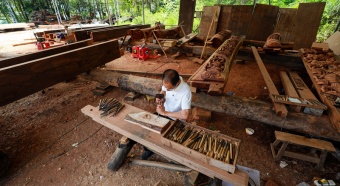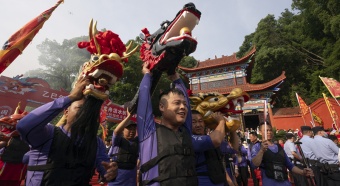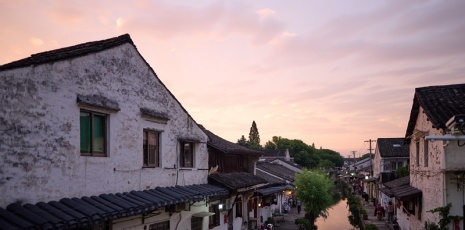*China's Xinjiang has been a multiethnic region since ancient times. Members of 56 ethnic groups now live there.
*In the city of Tacheng, there is an extended family of over 50 members, who are from various ethnic groups. Their stories reflect Xinjiang's diversity and ethnic unity.
by Xinhua writers Sun Zhennan, Gao Han, Zhao Ge
URUMQI, May 18 (Xinhua) -- In the city of Tacheng, northwest China's Xinjiang Uygur Autonomous Region, a restaurant called Rose Garden stands out for the great variety of food it serves.
Diners of different ethnic groups can always find one or two dishes to their liking on the menu, whether it be the Uygur pilaf, the Tartar pastries, or dumplings favored by many Han people.
For the owner, Halida Yilahun, the secret to Rose Garden's assortment of dishes lies in the help she gets from her extended family of over 50 members, who are from various ethnic groups.
"I've learned to make many delicacies on the menu from my relatives during family meals, when they all cooked some specialty dishes of their ethnic groups to share with us," said Halida Yilahun, a member of the Uygur ethnic group.
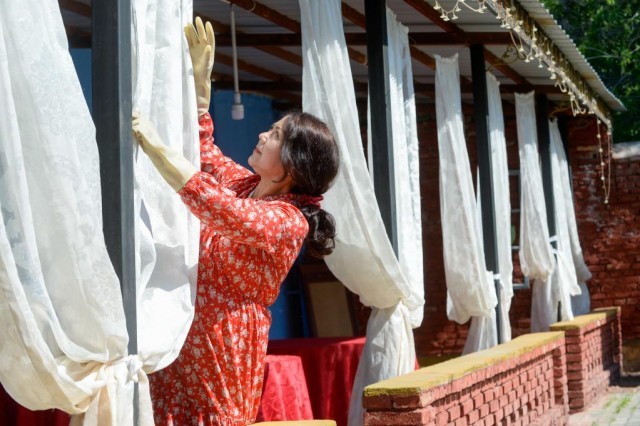
Halida Yilahun adjusts curtains at her home restaurant in Tacheng, northwest China's Xinjiang Uygur Autonomous Region, May 17, 2022. (Xinhua/Gao Han)
Her husband is of the Uzbek ethnic group, her two brothers-in-law are Tartar and Kazakh, and she has a younger brother from the Han ethnic group.
Xinjiang has been a multiethnic region since ancient times. Members of 56 ethnic groups now live in Xinjiang, according to the regional ethnic affairs commission.
In the community where Halida Yilahun's family lives, members of 14 ethnic groups live in harmony, and households as ethnically diverse as hers are common in Tacheng.
After marrying a young man of the Russian ethnic group two years ago, Halida Yilahun's elder daughter Muhramu gave birth to a boy last year.
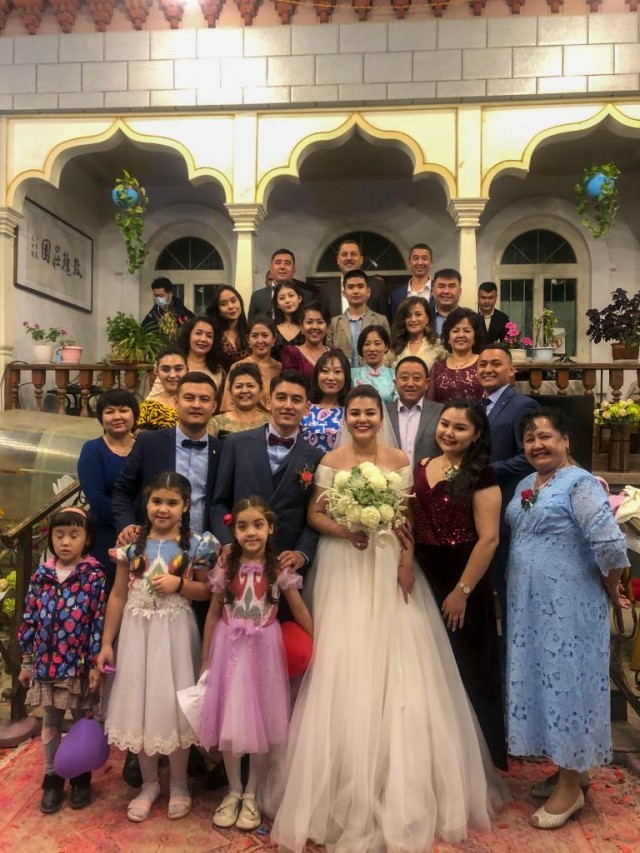
This undated photo shows Halida Yilahun (3rd L, 4th row) posing during the wedding of her elder daughter Muhramu in Tacheng, northwest China's Xinjiang Uygur Autonomous Region. Du Ronglu (2nd R, 3rd row) attended the wedding. (Xinhua)
Dumplings have long been favored by diners at Rose Garden. Halida Yilahun learned to make them while looking after her younger brother Du Ronglu.
In 1986, Du came to Xinjiang from east China's Shandong Province to find work. Young and thin, he could only do odd jobs on construction sites, earning a meager wage. Concerned, Halida Yilahun's father offered Du the job of herding for the family, and treated Du as his own son.
"When I was first brought to meet the family, Dad offered me a bowl of hot milk tea. It was my happiest moment since I came to Xinjiang. Drinking the milk tea, I became a part of the family," Du recalled.
Several years later, Du went back to Shandong after receiving letters from his relatives asking for his return. While there, he often practiced his Uygur language skills, hoping to meet his family in Xinjiang again one day.
When Du returned to Xinjiang in 2016, his Uygur parents had passed away. However, Du's children were able to reunite with their brothers and sisters in Xinjiang, continuing the family ties into the next generation.
"Thanks to my grandfather, I now have a younger brother and a sister of the Han ethnic group," said Muhramu.
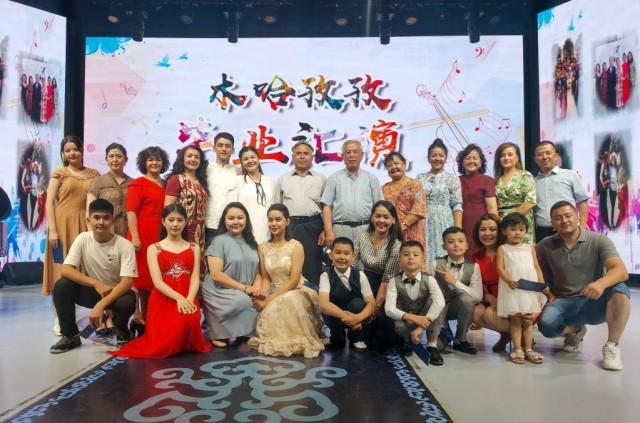
This undated photo shows Halida Yilahun (4th R, rear) posing during her daughter's graduation performance in Urumqi, northwest China's Xinjiang Uygur Autonomous Region. (Xinhua)
Influenced by her family, Muhramu followed a career in the arts and became the principal violinist of the orchestra of the Xinjiang Art Theater.
As someone working within the arts, Muhramu has always found it ridiculous that the United States fabricated lies of "cultural extinction" in Xinjiang.
"I have never felt any cultural oppression of any sort. On the contrary, what we have been doing is making innovations with traditional ethnic music," Muhramu said.
As an example, she cited the "Muqam Waltz," which the orchestra is rehearsing. The piece is an innovative attempt to incorporate Western musical instruments into a traditional folk-music form called Muqam.
As of June 2021, Xinjiang had a total of 4,640 projects of intangible cultural heritage. Of these, 96 projects have been included in the national list of intangible cultural heritage, while three are on the UNESCO list: the Uygur Muqam of Xinjiang, Manas, and Meshrep.
Muhramu said nearly half of the employees in her orchestra are from ethnic minorities, and they don't feel alienated at all.
"During the holidays of other ethnic minorities, we will celebrate together like a family," she said.
This year, Muhramu's son will celebrate his first birthday. "When he grows up, I hope he will be grateful to his parents and seniors, be as broad-minded as his great-grandfather, and unite with people of all ethnic groups," she said.
(Video reporters: Zhang Xiaocheng, Zhao Ge, Sun Zhennan, Gao Han; Video editors: Ma Ruxuan, Li Ziwei, Zhang Yuhong)

